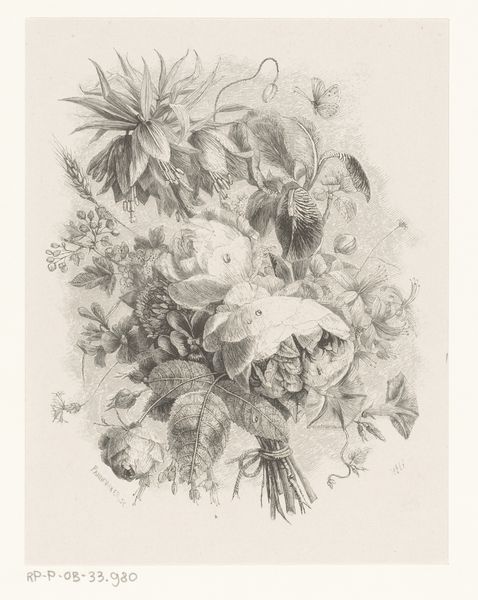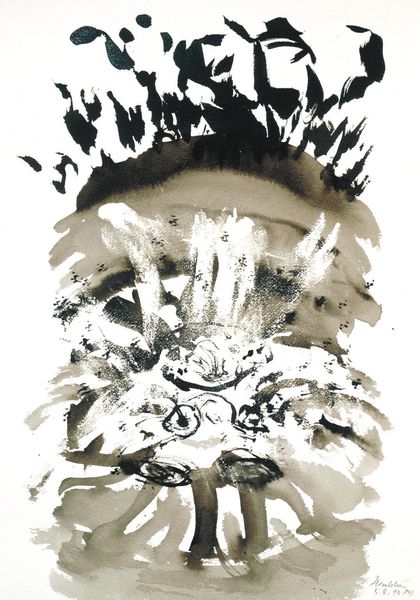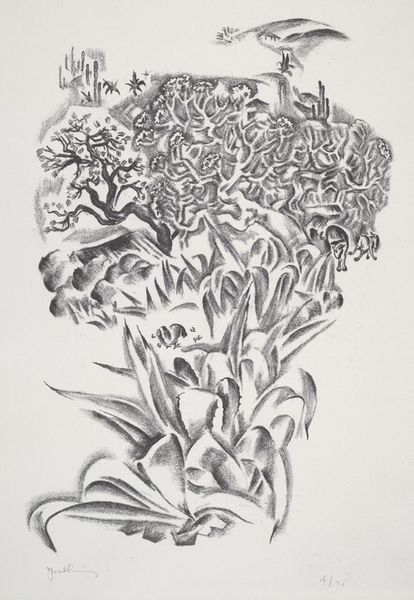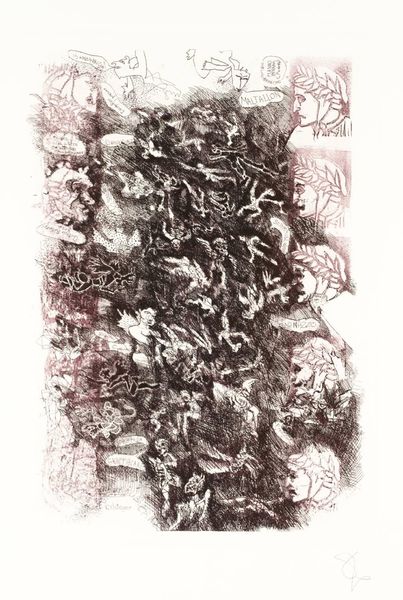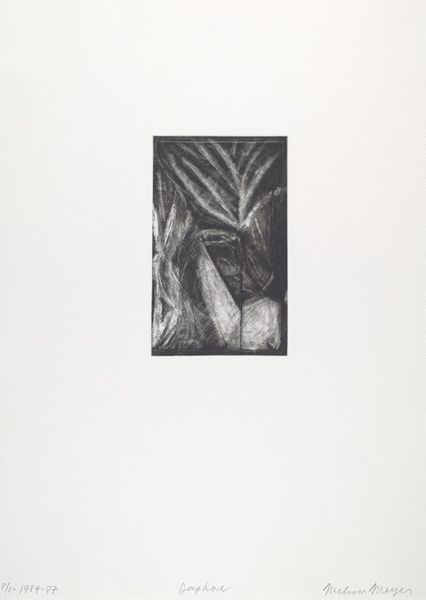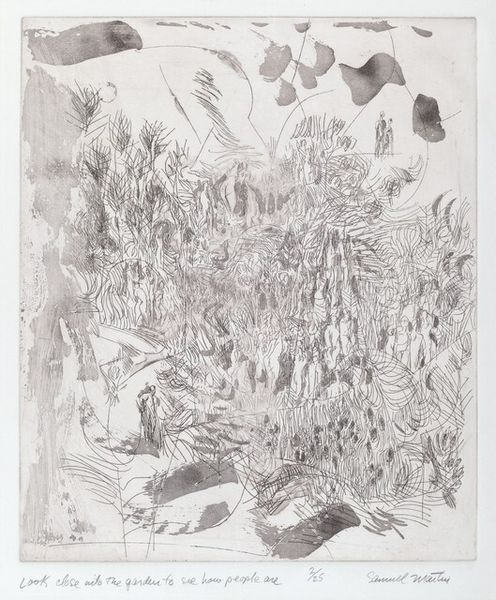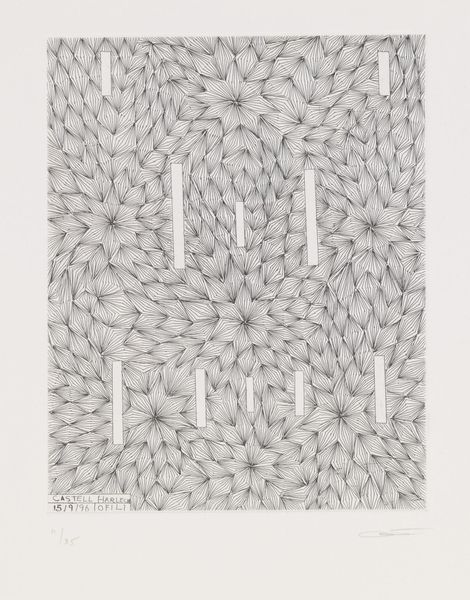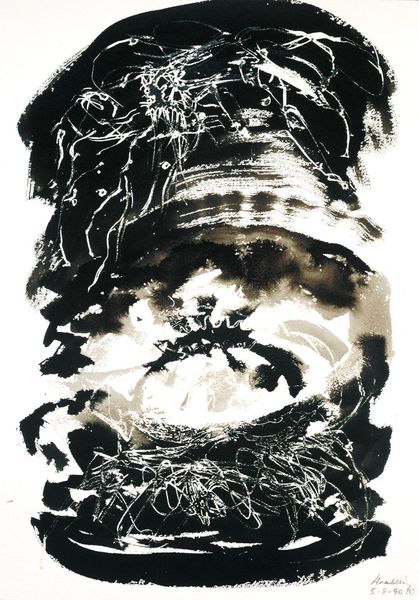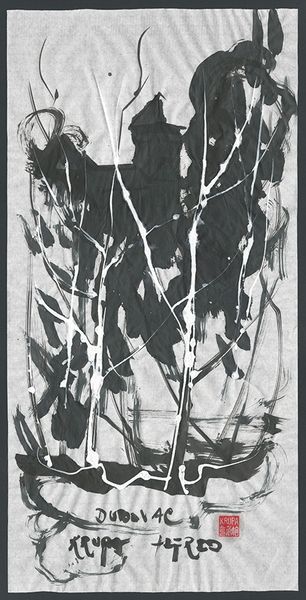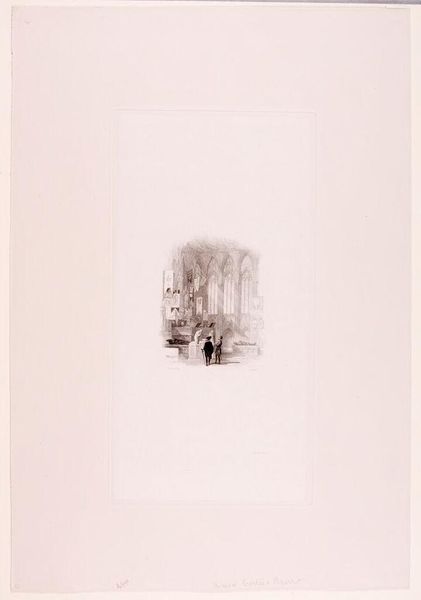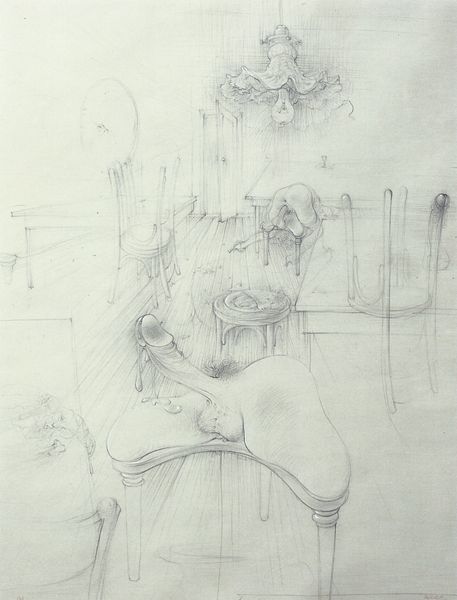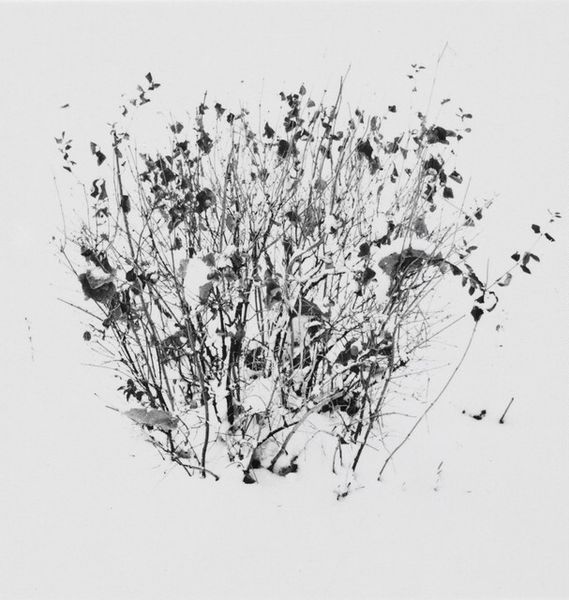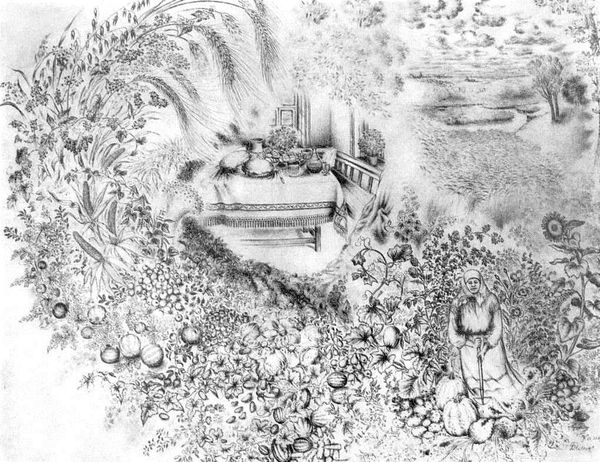
Dimensions: image: 432 x 314 mm
Copyright: © Richard Hamilton 2014. All rights reserved, DACS | CC-BY-NC-ND 4.0 DEED, Photo: Tate
Editor: Richard Hamilton's "Flower-piece B - cyan separation" presents a fascinating sketch! The everyday roll of Andrex seems oddly placed among those abstract floral forms. What symbolic weight does it carry in this composition? Curator: It's curious, isn't it? The flowers, though abstract, evoke notions of beauty and fragility, while the Andrex introduces the mundane, the disposable. Perhaps Hamilton is commenting on how even the most commonplace objects become part of our cultural landscape, imbued with a certain significance. Do you see any parallels between the textures? Editor: Yes, the softness of the flowers mimics the implied softness of the toilet roll, creating a strange visual echo. It is like the commercial and the aesthetic are blended! Curator: Precisely. It's a powerful statement about how consumer culture intertwines with our perception of beauty and value. A clever piece indeed. Editor: I hadn't considered the cultural implications so deeply before. Thanks for illuminating that! Curator: My pleasure. Looking at art through the lens of cultural symbols often reveals unexpected layers of meaning.
Comments
tate 8 months ago
⋮
http://www.tate.org.uk/art/artworks/hamilton-flower-piece-b-cyan-separation-p12105
Join the conversation
Join millions of artists and users on Artera today and experience the ultimate creative platform.
tate 8 months ago
⋮
These prints are related to a series of Flower-Piece paintings made by Hamilton in the early 1970s. The flowers themselves were based on an image on a laminated postcard with an illusory ‘three-dimensional’ effect. The addition of the Andrex toilet paper has been seen as counterbalancing the sentimentality inherent within the genre of painting flowers. It also reflects Hamilton’s fascination with advertising. He has described a lyrical, soft-focus advertisement for Andrex as being ‘like Watteau in its magical ambiguity’. Gallery label, July 2008
